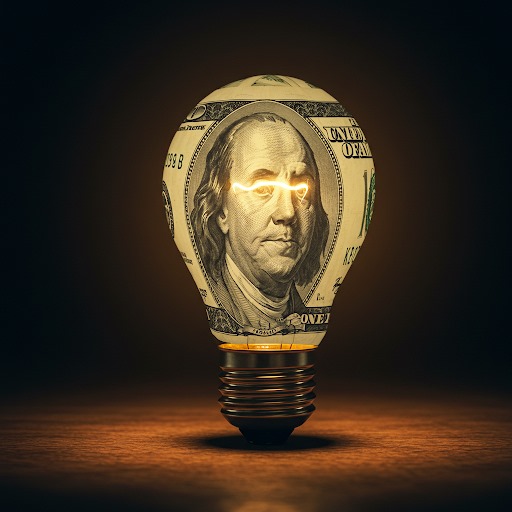

Why Switching to LED Lighting is a Brilliant Move for Your Wallet and the Planet
Are you still using those old, energy-guzzling incandescent bulbs? Or perhaps you switched to CFLs years ago, thinking you were doing the best you could? While both were steps in the right direction, the lighting landscape has dramatically shifted. Today, *Light Emitting Diodes (LEDs)* reign supreme, offering incredible benefits that make switching a no-brainer for savvy homeowners and businesses.
Let’s shed some light on why making the move to LEDs is one of the smartest, simplest upgrades you can make.
1. Slash Your Energy Consumption (and Your Bills!)
This is the headliner benefit. LEDs are dramatically more energy-efficient than their predecessors.
- Incandescent Bulbs: These traditional bulbs are notoriously inefficient, converting only about 10% of the energy they consume into light – the other 90% is wasted as heat!
- CFLs (Compact Fluorescent Lamps): While a big improvement over incandescents, CFLs still use significantly more energy than LEDs and contain mercury, posing disposal challenges.
- LEDs: These champions of efficiency use *up to 80-90% less energy* than incandescent bulbs and significantly less than CFLs to produce the same amount of light (lumens).
What does this mean for you? Lower energy consumption directly translates to lower electricity bills. While lighting might only be a fraction of your total energy use, switching multiple bulbs throughout your home or business can lead to noticeable savings month after month, year after year. As energy costs continue to be a concern in 2025, every bit of savings helps!
2. Unbeatable Lifespan = Fewer Replacements, More Savings
Tired of bulbs burning out at inconvenient times? LEDs last much longer than other types of bulbs.
- Incandescent Lifespan: ~1,000 hours
- CFL Lifespan: ~8,000 hours
- LED Lifespan: 15,000 to 25,000+ hours* (That’s potentially 15-25 years with average use!)
While the initial purchase price of an LED bulb might be slightly higher than an old incandescent, its incredible longevity means you’ll buy far fewer bulbs over time. Factor in the cost of replacement bulbs and the hassle of actually changing them (especially in hard-to-reach fixtures), and the long-term cost savings become undeniable. The payback period for the slightly higher upfront cost is often very short due to the combined energy and replacement savings.
3. Better for the Planet
Choosing LEDs isn’t just good for your wallet; it’s good for the environment.
- Reduced Energy Demand:* Lower energy consumption means less demand on power plants, leading to a reduction in greenhouse gas emissions.
- Less Waste:* Because LEDs last so much longer, fewer bulbs end up in landfills.
- No Harmful Materials:* Unlike CFLs, LEDs don’t contain mercury, making them safer to use and easier to dispose of responsibly.
4. Superior Light Quality and Features
Forget the harsh, cool light sometimes associated with early LEDs. Modern LEDs offer:
- Wide Range of Color Temperatures:* Choose from warm, yellowish light (similar to incandescents, ~2700K) to cool, bluish-white light (like daylight, ~5000K+) to suit any mood or task.
- Instant Brightness:* LEDs reach full brightness immediately – no annoying warm-up time like CFLs.
- Dimmability:* Many LED bulbs are designed to work with dimmer switches (just ensure you buy dimmable LEDs and potentially check dimmer compatibility).
- Durability:* LEDs are solid-state devices, meaning they don’t have fragile filaments like incandescents, making them more resistant to shock and vibration.
- Safety:* LEDs produce very little heat compared to incandescents, reducing the risk of burns or fire hazards, especially in recessed or enclosed fixtures.
Making the Switch: It's Easy!
Transitioning to LEDs is straightforward:
- Identify Your Bulbs:* Note the type of base (e.g., standard E26, candelabra E12, pin-base GU10) and the brightness (lumens, not watts) of your current bulbs.
- Choose Your LEDs:* Select LED replacements with the correct base and desired brightness (lumens). Pay attention to the color temperature (Kelvin) to get the light quality you prefer.
- Replace:* Simply swap out the old bulbs for the new LEDs. Start with your most frequently used lights to maximize savings quickly.
Switching to LED lighting is a simple, effective way to significantly reduce your energy consumption, lower your electricity bills, decrease your environmental impact, and enjoy high-quality, long-lasting light. It’s an investment that pays for itself quickly and continues to provide savings for years to come. Don’t stay in the dark ages of inefficient lighting – make the bright choice and switch to LEDs today!
